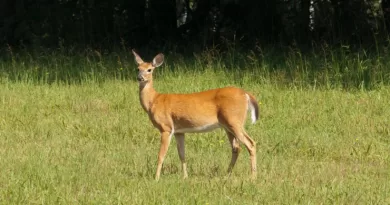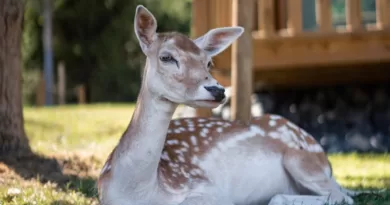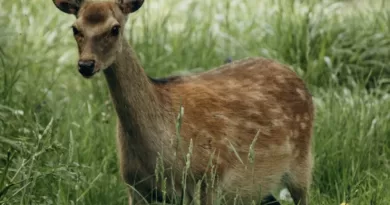Do Deer Eat Peaches
Understanding the Diet of Deer
Deer, being herbivores, have a diet primarily consisting of vegetation. They are known to consume a variety of natural food sources, including grass, leaves, twigs, and fruits. These make up the bulk of their diet, providing them with the necessary nutrients for survival. However, the specific food sources and preferences of deer can vary depending on their geographical location, as well as seasonal factors.
One of the natural food sources that deer typically consume is fruits. They are particularly fond of fruits that are sweet and easily accessible. This includes berries, apples, pears, and peaches, among others. Fruits provide deer with essential vitamins and minerals, contributing to their overall health. However, it is important to note that not all fruits are equally attractive to deer, and their preferences may vary.
Understanding the diet of deer is crucial for those who aim to coexist peacefully with these beautiful creatures. By knowing their natural food sources and what they typically consume, steps can be taken to protect crops or gardens from deer damage. Additionally, alternative food sources can be provided to ensure the well-being of the deer population while minimizing conflicts with human activities. By gaining insight into the factors influencing deer feeding habits, strategies can be developed to foster a harmonious environment for both deer and humans.
Natural Food Sources for Deer
Deer have a diverse range of natural food sources available to them throughout the year. One of their primary sources of nutrition is vegetation found in their habitat. They rely heavily on grasses, herbs, and shrubs to meet their dietary needs. Additionally, they are known to consume a variety of browse, including leaves, twigs, and buds from trees and woody plants.
In terms of grasses and herbs, deer tend to graze on species such as clover, bluegrass, timothy, and fescue. These plants provide them with essential carbohydrates and proteins. Alongside grasses, deer also rely on the leaves and twigs of various shrubs and bushes. Examples of shrubs that are commonly consumed by deer include blackberry, raspberry, wintergreen, and honeysuckle. These browse sources offer deer not only nutrients but also valuable minerals.
Furthermore, deer are opportunistic feeders and are known to adapt their diet based on availability. Depending on the region and season, deer may integrate fruits and nuts into their diet. Apples, pears, and berries, such as blackberries and raspberries, are particularly favored by deer during their ripening periods. Nuts like acorns, chestnuts, and hickory nuts are also consumed by deer, providing them with vital fats and energy. Understanding the natural food sources for deer is essential for anyone interested in deer habitat management or simply observing their feeding patterns in the wild.
Fruits That Deer Typically Consume
Deer are known to have a diverse diet, and an essential part of their food consumption includes fruits. These gentle herbivores show a particular affinity for a wide range of fruits, making them a valuable component in their overall diet. Fruits not only provide the necessary nutrients and energy for deer but also serve as a tasty treat for them.
When it comes to fruits, deer typically consume a variety of options. Apples are a popular choice for many deer, as they are easily accessible and provide a good source of carbohydrates. Alongside apples, berries, such as blackberries and raspberries, are commonly enjoyed by deer. These sweet and succulent fruits are favorite seasonal treats for these graceful creatures. Additionally, wild grapes are also on the menu for deer, offering a refreshing and appetizing option. Overall, fruits play a significant role in the diet of deer, providing essential nutrients while adding variety to their meals.
The Nutritional Value of Peaches
Peaches, with their vibrant colors and succulent taste, are not only a summer favorite but also a nutritious addition to one’s diet. These sweet and juicy fruits are packed with essential vitamins and minerals that contribute to overall health and well-being. They are a great source of vitamin C, which strengthens the immune system, promotes collagen production, and aids in iron absorption. Additionally, peaches contain potassium, an electrolyte that helps regulate blood pressure and maintain proper hydration levels.
Factors Influencing Deer Feeding Habits
Various factors play a significant role in shaping the feeding habits of deer. One of the key influences is the availability of food in their habitat. Like any other animal, deer will naturally gravitate towards areas where food is abundant and easily accessible. This means that if a particular area has a scarce food supply, deer may be forced to seek alternative sources or travel further distances in search of nutrition.
Another factor that affects deer’s feeding habits is the presence of predators. Deer are known to be cautious creatures, always wary of potential danger. When predators are present in an area, deer may alter their feeding patterns to minimize the risk of becoming an easy target. They may choose to feed during times of the day when predators are less active or seek out areas with dense vegetation that provides cover and reduces their visibility.
Moreover, environmental conditions and weather patterns can also influence deer’s feeding habits. For example, during periods of drought, when water sources are scarce, deer may focus on consuming plants with higher water content to meet their hydration needs. Similarly, during the winter months, when food is scarce, deer may resort to eating bark, twigs, and other less palatable vegetation to survive.
Understanding these various factors can help us gain a better insight into the feeding habits of deer and provide valuable knowledge for managing their populations and coexisting harmoniously with them. By recognizing their needs and adapting our practices accordingly, we can take steps towards fostering a healthy balance between humans and deer in their shared environments.
Seasonal Variations in Deer’s Diet
During different seasons of the year, deer adapt their diet to the availability of food sources in their environment. In the spring and summer months, when green vegetation is abundant, deer primarily feed on grasses, herbs, and tender shoots. This is a time when they can easily find nourishment to support their growth and reproduction. As autumn approaches and the temperature starts to drop, deer shift their focus towards consuming fruits, nuts, and acorns, as these items provide them with the necessary fat and carbohydrates to endure the upcoming winter. During the winter months, when food sources are scarce, deer rely heavily on woody browse such as twigs, buds, and bark from trees and shrubs. These winter food sources help sustain deer through the cold months when other options are limited. By adapting their diet to the changing seasons, deer are able to survive and thrive in their natural habitats.
Strategies to Protect Your Peach Trees from Deer
One effective strategy to protect your peach trees from deer is to construct a physical barrier around them. This can be achieved by installing a sturdy fence made of materials such as metal or wood. The height of the fence should be at least 8 feet, as deer are capable of jumping significant heights. Additionally, ensure that the fence is properly secured to the ground to prevent deer from finding gaps to squeeze through. By creating this physical deterrent, you can greatly reduce the likelihood of deer accessing and damaging your peach trees.
Another strategy is to make use of deer repellents. There are various commercial repellent products available that can be sprayed onto the trees or applied to the surrounding area. These repellents typically contain ingredients that emit odors or flavors that are unpleasant to deer, deterring them from approaching and feeding on the peach trees. It is important to regularly reapply these repellents, especially after rain or if they have been washed away, to maintain their effectiveness. By incorporating deer repellents into your pest management approach, you can help safeguard your peach trees from deer damage.
Alternative Food Sources for Deer
In addition to their natural food sources, deer have been known to consume a variety of alternative food sources in certain situations. These alternative food sources can include agricultural crops, garden plants, and even human-provided food. While deer typically prefer their natural food sources, they may turn to these alternatives in times of scarcity or when their natural habitat has been disrupted.
Agricultural crops such as corn, soybeans, and alfalfa are often appealing to deer due to their high nutritional value. These crops are generally more readily available and abundant than natural sources, making them an attractive option for deer in certain areas. Similarly, garden plants and fruit trees can also be targets for deer, especially during times when natural food sources are limited. Gardeners and farmers often employ various strategies to protect their crops from deer, such as installing fences or using repellents, but it is important to find a balance that allows deer to feed while minimizing damage.
Deer-Resistant Trees and Plants
When it comes to creating a deer-resistant landscape, it is important to choose trees and plants that are less likely to be attractive to these animals. One popular option is the Japanese maple tree (Acer palmatum), which not only adds beauty to your garden but also deters deer with its aromatic leaves. Another tree to consider is the American holly (Ilex opaca), known for its spiky leaves and bright red berries, which are unappealing to deer.
In addition to trees, there are several plants that can be utilized to discourage deer from feasting on your garden. The lavender plant (Lavandula) is not only fragrant and visually appealing, but its strong scent is known to repel deer. Another great option is the Russian sage (Perovskia atriplicifolia), which has silver-gray foliage and produces tall spikes of lavender or blue flowers that are resistant to deer grazing. By incorporating these deer-resistant trees and plants into your landscape, you can create a beautiful and peaceful garden while minimizing the risk of deer damage.
• Japanese maple tree (Acer palmatum) – aromatic leaves deter deer
• American holly (Ilex opaca) – spiky leaves and bright red berries are unappealing to deer
• Lavender plant (Lavandula) – fragrant and visually appealing, strong scent repels deer
• Russian sage (Perovskia atriplicifolia) – silver-gray foliage, produces tall spikes of lavender or blue flowers resistant to deer grazing
Coexistence Tips for Gardeners and Deer
To peacefully coexist with deer in your garden, there are a few tips you can follow. Firstly, consider creating physical barriers to deter them from entering your garden. This can be achieved by installing sturdy fences or using motion-activated sprinklers to startle them away. It is important to ensure that the barriers are at least six feet tall, as deer are capable jumpers. Secondly, remove any potential temptations from your garden by avoiding planting their preferred food sources, such as fruits and vegetables. Instead, focus on cultivating plants that are less appealing to deer, such as those with strong scents or prickly leaves. Additionally, be mindful of the time of year when deer are most active, which is typically during the early morning and late afternoon. Lastly, consider using deer repellents, like natural sprays or homemade concoctions, to keep the curious creatures at a distance. By implementing these coexistence tips, you can maintain a harmonious relationship with deer while still enjoying your garden.
What is the diet of deer?
The diet of deer mainly consists of plants, including leaves, stems, grass, fruits, nuts, and acorns.
What are some natural food sources for deer?
Natural food sources for deer include grass, twigs, leaves, herbs, flowers, fruits, nuts, and mushrooms.
Which fruits do deer typically consume?
Deer typically consume a variety of fruits, such as apples, pears, cherries, blueberries, grapes, and peaches.
What is the nutritional value of peaches for deer?
Peaches are a nutritious food source for deer, providing vitamins, minerals, and carbohydrates essential for their diet.
What factors influence deer feeding habits?
Factors such as availability of food, season, weather conditions, population density, and human activities influence deer feeding habits.
Do deer’s diet vary seasonally?
Yes, the diet of deer can vary seasonally. They tend to consume different foods based on the availability and abundance of certain plants during each season.
How can I protect my peach trees from deer?
Strategies to protect peach trees from deer include using fences, repellents, deer-resistant plants, netting, or planting trees in locations not easily accessible to deer.
What are some alternative food sources for deer?
Some alternative food sources for deer include corn, soybeans, alfalfa, clover, oats, and various types of shrubs and bushes.
Are there any deer-resistant trees and plants?
Yes, there are deer-resistant trees and plants available that are less likely to be consumed by deer, such as lavender, rosemary, daffodils, lilac, and certain types of conifers.
What are some coexistence tips for gardeners and deer?
Coexistence tips for gardeners and deer include using fencing, planting deer-resistant plants, creating designated feeding areas, and avoiding the use of chemical fertilizers and pesticides harmful to deer.




